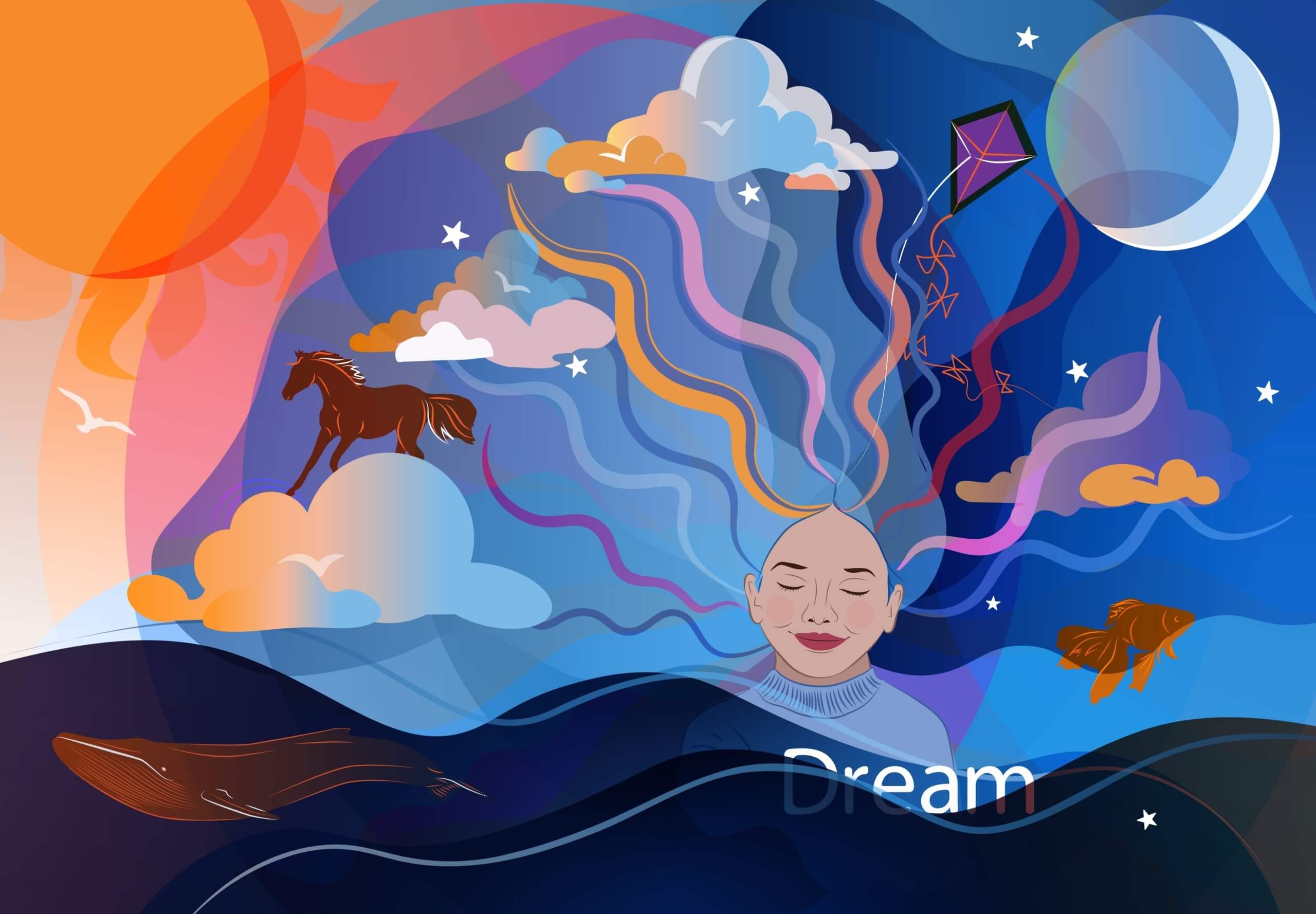Why a Wandering Mind Doesn’t Mean You’re Not Meditating
Question:
7 min read
 Craig Hamilton
:
Feb 6, 2025 12:30:00 AM
Craig Hamilton
:
Feb 6, 2025 12:30:00 AM

What does it mean to have a “true nature”? This framing of the spiritual path as a journey to our true nature comes from the Buddhist tradition. According to this tradition, everyone has a Buddha nature or a true nature.
The distinction being made here is that enlightenment, spiritual realization, or awakening isn’t something that gets created. It’s not something generated or produced through any kind of activity. The spiritual path—or the path of awakening—is a path of uncovering an “essence” that’s already there, that has been there since the beginning of time, since before anything was created. It is the uncreated, the unborn.
This is an important notion to contemplate and understand as we embark on, or progress along, the spiritual path. Often, due to the way we’re wired, we think we’re trying to go somewhere we’re not now. We think: I am unenlightened. I’m identified with my ego and have only glimpses of some other possibility. Clearly, that’s not where I am; that’s where I could get. So, we’re trying to go somewhere in consciousness. We’re trying to find some place we perceive as outside ourselves and bring it into us.
Simply considering that you have a true nature that’s already enlightened—that doesn’t need to be generated or found somewhere else, and that there’s really nothing you could do to get there—is, in itself, an enlightening practice.
Take time as you walk the path to contemplate that all your spiritual efforts are simply clearing away the obstructions to who you already are. Every enlightened quality you aspire to manifest in this world is already fully a part of you. It is your own original, essential nature.
If we go a little deeper into this, we see that when a person awakens to their true nature and learns to get out of the way so it can come through and manifest, all the qualities we aspire to are already present. All the virtues, all the wonderful spiritual capacities, are contained within that essence. They simply reveal themselves; they are not cultivated. Compassion, spontaneous wisdom, creativity, deep goodness, authenticity—all the countless virtues we could name—are truly the natural capacities of our own true self.
Take a moment to sit with that thought on its own. How much of our lives do we spend trying to cultivate all these different capacities? I’m trying to be a more compassionate person. I’m trying to be wiser, more reflective. I’m trying to do the right thing, even when it’s hard. I’m trying to be authentic, to face the truth, and to speak the truth. These are all the things we strive for.
And I’m not saying we shouldn’t try to do those things. It’s good that we make those efforts. Why? Because, in some way, we’re trying to manifest our true nature by cultivating those qualities. So, all that effort is not bad or foolish.
But what if it’s all already there? What if there’s just some kind of puzzle we need to solve, some kind of key we need to find to unlock a door? And what if, once unlocked, all those qualities would show up fully formed?
It’s an almost unimaginable possibility to the striving ego, which never feels like it’s enough, is always trying to get somewhere else, and sees life as an endless struggle.
So where does meditation come into this awakening of our true nature? There are really two ways to look at it, both of which are valid and reveal different insights.
One way to view meditation is as a practice of embodying the natural orientation of our true nature or true self. When we take various postures in meditation—allowing everything to be, not making anything a problem, including everything, and resting as awareness itself—they reflect the natural state of our essential nature.
When we discover this true nature and allow it to come forth and guide our life, we discover that these are the natural postures of enlightenment. What you might call the nature of the enlightened mind, or enlightened awareness, is inherently like this.
In this sense, meditation can be seen as taking time to practice having an enlightened relationship with our experience. Being enlightened in relation to whatever arises means allowing thoughts to come and go without identifying with them. Any feeling can arise, and I don’t have to react to it. I am dis-identified from it, free from it.
I can sit here and allow the full complexity—the agony and the ecstasy—of the entire human condition to move through me, however it does. And yet, I can remain free from it, unmoved by it, inwardly or outwardly. That’s an enlightened relationship to experience. It is liberated. It is free.
It means that if I can take that posture, I’m no longer at the effect of anything. I’m no longer at the mercy of life’s ups and downs. No matter how bad things get on the outside, I’m free. I’m not reacting to it. I become a free chooser in relation to it. No matter how difficult things get on the inside—no matter the pain, suffering, or grief I might encounter—I can withstand it because I won’t get lost in it. I’m standing in a place of freedom in relation to everything.
In a very real sense, meditation is the practice of being free. It’s the practice of being awake. It’s the practice of being enlightened. And through meditation, we find that this is something we can actually practice—and we get better at it.
As we improve, we develop greater objectivity in relation to our mind and feelings, and this starts to show up in our lives. People around us notice: “Wow, you seem much more stable, much more present, much more conscious, much more caring. There’s this wisdom that you have. You’re much more enlightened than you used to be.” Something is happening through this practice. A progressive opening occurs as we continue.
And yet, there’s another way of understanding how meditation relates to awakening our true nature. This is the aspect the mind cannot comprehend and cannot participate in.
You see, another way of understanding what we’re doing when we practice these meditations is that we’re taking a stand against the momentum of habit that obstructs our true nature. After all, we’re talking about our true nature.
If it’s really our true nature, why would it need to be practiced? It just needs to be uncovered.
A deeper or truer way of understanding what we’re doing when we meditate—even though everything I said about the first perspective is valid and authentic—is that when we meditate, we’re refusing to go along with the momentum of ego that obstructs our true nature and keeps it from revealing itself.
Why is it important not to make a problem? Because if you look at the ego, it’s a problem-making machine. It can never be satisfied. It’s what the poet Kabir called a “wanting creature.” This wanting creature inside me—grasping and thirsting—it’s never enough.
So we ask, “What if I just sat here for a while and assumed it was enough? That whatever is here is enough? That there’s actually nothing missing from this moment at all?”
What might reveal itself if I could hold that posture for a while? By holding that posture, I’m essentially saying “no” to the momentum that insists, “There’s something wrong. Not this, not that. It shouldn’t be this way. It shouldn’t be that way. We need to fix this or get there.” Instead, I’m saying, “No. I’m not going to make a problem. I’m not going to insist there’s something wrong. I’m not going to insist that reality is anything less than whole, perfect, and complete in this moment.”
The way to think about it is that, in meditation, we’re creating the conditions under which something that’s already here can reveal itself to us. Something that’s always present, but we can’t see it because we’re too busy doing things that constantly get in the way. When we’re meditating, we’re creating this space within ourselves for a miracle to reveal itself.
We’re creating conditions that might allow us to stumble upon something that was right in front of us all along—but we couldn’t see it because of where we placed our attention. And when we do stumble upon our true nature, it’s always miraculous. It’s always arresting in some way. It’s like, “Oh my God. How did I not see this? Has this been here all along? This is who and what I’ve always been. How did I not know this? How did I go through all these years of my life thinking I was something other than this?”
It’s the kind of realization that can bring us to our knees in an instant.
The trick is to see that even though this is our true nature—who we really are, our essential self—our true nature exists in another dimension.
I don’t mean a dimension “out there” somewhere in some ethereal land, but it is another dimension nonetheless. And that becomes clear when it reveals itself. It’s another dimension of consciousness. Another dimension of being.
It’s like the shift from a two-dimensional drawing that suddenly becomes animated in three dimensions. It goes from flat to a three-dimensional world. And then we move from three dimensions to… let’s keep it simple and say four. I wanted to say 1,000, but that makes it seem complicated—it’s not.
The reason I’m calling it another dimension is because I’m referring to the realization of what’s called “non-duality.” Non-duality is something our minds can’t comprehend because, at this point, we can only think dualistically. We live in a world of separation and dualism, where there’s always this or that, inside and outside, what’s included and what’s excluded.
But this is an awakening to a kind of radical wholeness that absolutely includes everything in its perfection.
Somebody once asked Baker Roshi if meditation causes enlightenment. He said, “No, enlightenment is always an accident. It’s always an accident. But meditation can make you accident-prone.” It’s a powerful metaphor because awakening to our true nature isn’t something you can aim for with your mind. And even if you’ve experienced it 100 times, you can’t hold on to any memory of that other dimension.
The mind can’t hold the memory of the fourth dimension. So, you can never aim for it based on anything you’ve read, heard, or experienced in the past. You can’t say, “Okay, I’m trying to go there again.”
It’s always an accident. But by doing these practices and slowing down the momentum of ego, we make it much more likely that we’ll have that very fortunate accident.
And not just have that accident—because meditation isn’t just about having a momentary experience of our true nature—but to be ready to receive it when it reveals itself. To be ready to allow it.
When we practice letting go of control and being with whatever is happening, we come to a place where this arresting realization can start to open up. We’re not going to run away from it; instead, we’ll have the space to let it blossom and reveal itself. And as we begin to occupy it, we let go of our personal agenda, our personal needs, and our personal story, so that it can truly flower, take root, and stay.
Because that’s the goal in the end, to let it stay—not just to visit it in occasional moments of realization, but to let it become our only home. To come home to our true nature.

Question:

At some point or another, nearly all meditators struggle with the challenge of an overactive mind. Most of us are aware that meditation requires us...

Most meditators, from beginners to experts, are probably familiar with the “inner narrator.” It’s that voice that seems to be an almost constant...